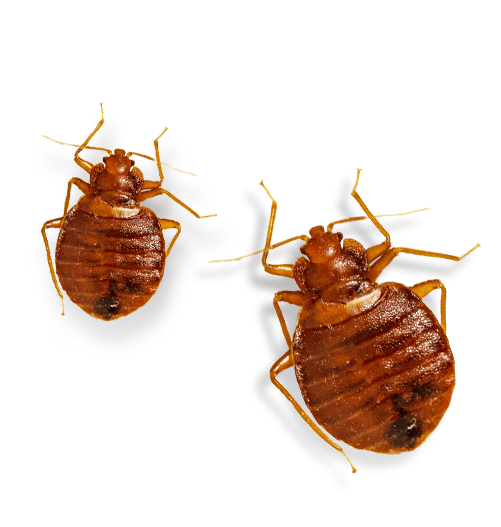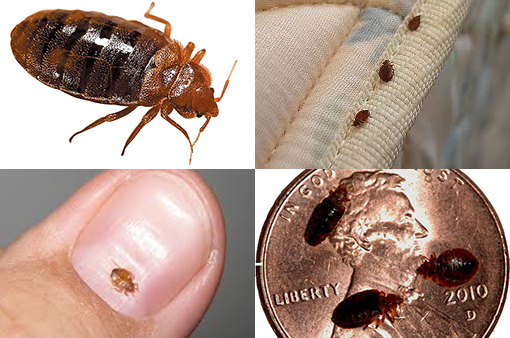Comprehending the Lifecycle of Bugs for Targeted Control Approaches
Recognizing the lifecycle of bugs is a fundamental facet of reliable parasite monitoring approaches. By understanding the numerous stages of development that parasites undertake, a much more targeted and accurate technique can be embraced to regulate their populaces. This understanding not just clarifies the vulnerabilities within the insect lifecycle however also leads the means for applying strategic actions that can disrupt their development and recreation cycles. Via a deeper understanding of how insects thrive and evolve, customized control methods can be developed to deal with certain points in their lifecycle, inevitably leading to even more successful insect monitoring end results.
Value of Recognizing Insect Lifecycle
Understanding the lifecycle of insects is vital for developing efficient and targeted control techniques in insect monitoring. By understanding the numerous phases a bug goes through from egg to grownup, bug control specialists can identify susceptible points in the lifecycle where intervention can be most effective.
Furthermore, recognizing the certain environmental problems necessary for each phase of the parasite's lifecycle can lead choices on habitat modification or exclusion methods to disrupt the lifecycle and reduce bug populaces. This expertise makes it possible for pest management experts to implement aggressive actions instead of depending entirely on reactive treatments, bring about more long-lasting and lasting parasite control services. Inevitably, a comprehensive understanding of bug lifecycles empowers pest control experts to tailor their methods efficiently, decreasing ecological effects and taking full advantage of control results.
Trick Stages in Insect Advancement
To successfully execute targeted control approaches in insect monitoring, a vital element exists in thoroughly identifying and comprehending the key stages in insect advancement. Parasite advancement generally consists of a number of vital stages that are critical for their lifecycle and administration.

Susceptabilities in Pest Lifecycle
Throughout the different stages of a pest's lifecycle, distinct susceptabilities emerge that can be strategically targeted for effective control actions. One vital vulnerability lies in the egg stage, where parasites are frequently much more prone to certain pesticides or biological control agents because of their soft outer covering, making them less complicated targets for treatment. Furthermore, the larval or nymph phase presents susceptabilities as parasites undergo quick development and development, requiring high power usage that can be made use of by interrupting their food resources or presenting growth preventions. Pupal stages, identified by immobility and transformation, offer a home window for targeted control via physical barriers or certain treatments that prevent effective development. Lastly, adult insects, while much more resistant due to their reproductive capacity, can still be prone throughout breeding or egg-laying activities, which can be interfered with with pheromone traps or sterilization methods. Understanding these vulnerabilities in the bug lifecycle is crucial for creating specific and effective control approaches that properly handle insect populations while minimizing ecological influence.
Carrying Out Targeted Control Procedures

Executing targeted control measures generally involves a multi-faceted technique. This may consist of environment modification to make the setting less welcoming to parasites, such as eliminating standing water for mosquito control or securing entry points for rodents. Furthermore, biological control approaches can be used, where all-natural predators or pathogens are introduced to keep insect populations in check.
Chemical control, such as the careful application of pesticides, is another usual technique. It is essential to utilize these substances judiciously to decrease environmental impact and prospective damage to non-target species - A1 bed bug removal houston. Integrated Parasite Management (IPM) methods that combine various control steps in a coordinated and sustainable way are commonly the most reliable in accomplishing lasting insect administration goals. By applying targeted control steps based on a complete understanding of parasite lifecycles, bug populations can be efficiently regulated while lessening risks to human wellness and the atmosphere.
Boosted Bug Monitoring Practices

Additionally, the incorporation of biological control agents, such as all-natural predators or pathogens of pests, can help in reducing dependence on chemical pesticides and promote an extra balanced environment. Applying A1 Bed bug Exterminator houston physical barriers and catches can likewise belong to enhanced parasite administration techniques, offering safe and targeted remedies for insect control. Furthermore, making use of pheromones and other semiochemicals can interrupt pest breeding patterns and interaction, causing lowered pest populations with time.
Verdict
By recognizing vital phases in bug growth and susceptabilities in their lifecycle, targeted control actions can be applied to decrease bug populations. Enhanced parasite administration practices can help lower the reliance on broad-spectrum chemicals and promote even more sustainable and eco friendly parasite control techniques.
Understanding the lifecycle of insects is essential for creating effective and targeted control approaches in bug management. By understanding the different phases a bug goes through from egg to grownup, parasite control experts can determine susceptible factors in the lifecycle where intervention can be most successful. Inevitably, an extensive understanding of pest lifecycles encourages pest control specialists to tailor their methods effectively, making the most of and reducing environmental effects control results.
By carrying out targeted control procedures based on a detailed understanding of bug lifecycles, parasite populations can be effectively controlled while minimizing dangers to human health and the atmosphere.
By determining essential stages in parasite advancement and vulnerabilities in their lifecycle, targeted control steps can be executed to minimize pest populaces.
Comments on “Top A1 Bed Bug Treatment in Houston - Quick and Affordable”